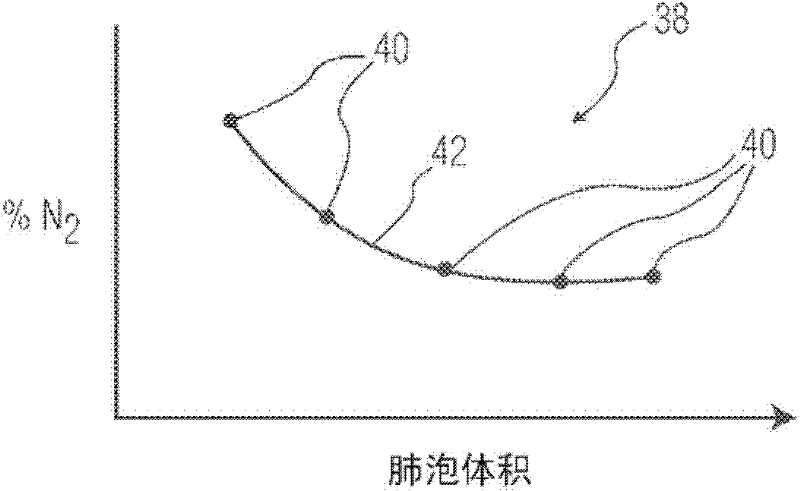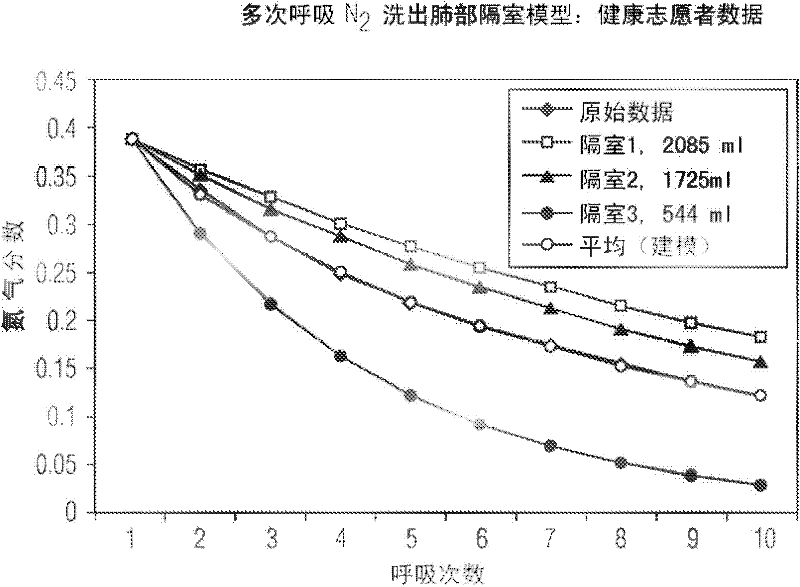Determining the functional residual capacity of a subject
A functional residual capacity, subject technology, applied in the fields of drug devices, diagnostic recording/measurement, medical science, etc., can solve problems such as unreliability
- Summary
- Abstract
- Description
- Claims
- Application Information
AI Technical Summary
Problems solved by technology
Method used
Image
Examples
Embodiment Construction
[0014] figure 1 A system 10 configured to determine a functional residual capacity of a subject 12 is illustrated. Specifically, system 10 does not measure O 2 The amount consumed then determines the functional residual capacity of subject 12 . This is not to say that the system 10 is measuring O 2 is not operable in the case of consumption, but does not require such measurements to make a determination. The determination of functional residual capacity by system 10 is performed in real time or near real time. As used herein, the term "near real-time" refers to processing that is performed in close enough proximity to real-time to be of value in providing ongoing therapy to subject 12 as a result of the processing. For example, determining functional residual capacity in near real time would provide a metric related to the current functional residual capacity of subject 12 that can be used to dynamically adjust one or more aspects of respiratory therapy being provided to s...
PUM
 Login to View More
Login to View More Abstract
Description
Claims
Application Information
 Login to View More
Login to View More - R&D
- Intellectual Property
- Life Sciences
- Materials
- Tech Scout
- Unparalleled Data Quality
- Higher Quality Content
- 60% Fewer Hallucinations
Browse by: Latest US Patents, China's latest patents, Technical Efficacy Thesaurus, Application Domain, Technology Topic, Popular Technical Reports.
© 2025 PatSnap. All rights reserved.Legal|Privacy policy|Modern Slavery Act Transparency Statement|Sitemap|About US| Contact US: help@patsnap.com



